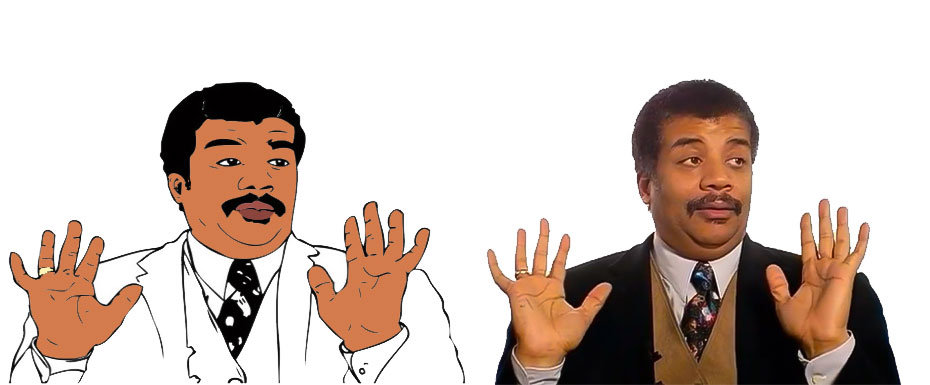
A meme is a unit of cultural information, which can be any phrase, idea, symbol, image, or sound transmitted from person to person based on imitation. The latter criterion is fundamental because only imitation (replication) forms the entire mechanism of the meme’s emergence. Furthermore, as a unit of cultural information, the meme does not depend on the specific situation but is a universal code. In practice, this manifests itself in cases where the same meme is used to explain various situations. In other words, a meme becomes a meme only when it transforms from a specific precedent event into a context-free unit of information.
At the same time, the meme is an integral part of art, and the Internet meme, in particular, is nothing more than a type of online folklore based on jokes. Memes have even replaced traditional jokes and anecdotes because now, when we text each other on social media, no one exchanges jokes from joke books; everyone discusses the latest memes. And we have to face it; memes are not bad, it’s a part of our online culture, an attribute of today’s digital society. So let’s learn more about this phenomenon.
History of Memes
Many Western scientists have been studying memes as a phenomenon since the 1970s and have even established a scientific discipline called memetics. In 1976, English scientist Richard Dawkins published his book The Selfish Gene, which marked the birth of memetics as a science. Memetics transfers the concept of Darwinian evolutionary theory to human culture. Broadly understood, it is an approach that studies ideas as units of cultural information. The term “meme” appeared in Dawkins’ work as analogous to “gene” in genetics.

The meme concept was developed in the works of another scholar, Douglas Rushkoff, who transfers it to the media space. Rushkoff’s book Media Virus: Hidden Agendas in Popular Culture expands on Dawkins’ ideas and brings the concept of the meme into the media realm.
While Dawkins’s “meme” is a unit of information similar to a “gene” in genetics, Rushkoff’s “meme” is a complex virus with different origins. He calls media viruses those phenomena and events that indirectly or directly affect society. Accordingly, Rushkoff describes examples of how diverse media influence society and manipulate public opinion in his book.
Douglas Rushkoff’s concept extends to the second half of the twentieth century. It was then, in his view, that society moved into a new era, which he calls the “infosphere.” It provided fertile ground for the emergence and spread of such phenomena as media activism, political PR, interactive media, media viruses, etc.
According to Rushkoff, arousing the interest of media consumers and spreading media viruses can cause a serious shift in the mass consciousness.
What Types of Memes Exist?
There are many classifications of memes because they can be divided according to a variety of characteristics.
For example, according to the method of origin, memes can be divided to:
- Deliberately created – the so-called “forced memes” created by marketers or boring users to promote the brand or themselves.
- Co-opted memes – seem to arise spontaneously but are instantly picked up by interested parties and promoted for a purpose.
- Self-generated – altogether folk creation, a meme in its purest form, would be one hundred percent viral.
In terms of semiotics, memes are standardly divided into:
- Visual – the most massive. These are your favorite pictures, macros, demotivators, comics, faces, and so on.
- Audible – songs, taglines, mottos. Yes, those are memes, too.
- Textual – any verbal expressions, neologisms, poems, slogans existing in the text form.
- Mixed – these can include video memes because they combine visual and audio features. Some sources say mixed memes have pictures with text because they combine both visual and verbal content.

Internet Memes Classification
Memes can be classified according to their distribution channels, and on this basis, one of the most mass and popular types stands out – Internet memes. In the same way that mass information is spread, there are channels to distribute memes such as television, the printed press, and radio. Another form of transmission of memes can be described as so-called channels of personal communication: interpersonal communication and communication of one person with the audience. This principle of classification is conditional, as the same memes can be distributed through different channels.
Internet memes can also be divided by the criterion of lifespan: into short-term and long-term. Long-term ones can include memes that live and are actively distributed by users, much longer than the story that became the basis for the meme. Conversely, a short-term meme ceases to be relevant as spontaneously as it arose.
Depending on the circumstances, a meme takes from several days to several years to spread, after which the process of replication slows down or stops. Then, finally, there comes a “period of saturation”: the meme is displaced by other, new memes, and sometimes the meme remains known only to a narrow audience of Internet users.
According to style, internet memes can be divided into ironic, demotivating or motivational, propaganda, and others. In addition, there are general and local memes according to their specificity. The latter is carried by representatives of various professions or subcultures, such as IT specialists or medics, rockers, or electronic music fans.
In turn, each of the meme types is also classified according to other characteristics.
For example:
Two-part memes – two-part statements consisting of a title and a punchline. In most cases, it is a picture with a surrounding text. This type may include demotivators – images with captions formally aimed at creating an atmosphere of doom and meaninglessness of human effort, or the once-popular advice memes.

Character memes – based on the image of a specific character, where the visual component performs the verbal function. For example, a meme depicting actor Robert Downey Jr. rolling his eyes is an expression of fatigue and passive aggression. Even when taken out of context, the picture still carries a specific message.
Syntactic – memes based on the repetitive structure of the text, in which individual elements are changed. For example, the famous aphorism “There are three things you can watch forever…” becomes a meme if the last part of the expression is replaced by something else.
Situational – memes-comics, like the syntactic, are represented by a typical scheme in which individual elements are changed as pictures in comics.
Comparative – memes based on the comparison of two or three images. For example, the meme “You vs. the guy…”
At this point, my brief history of memes comes to an end. If you enjoyed it and want to learn more, then go to the rest of my blog articles, where you will find even more fascinating and valuable information.





